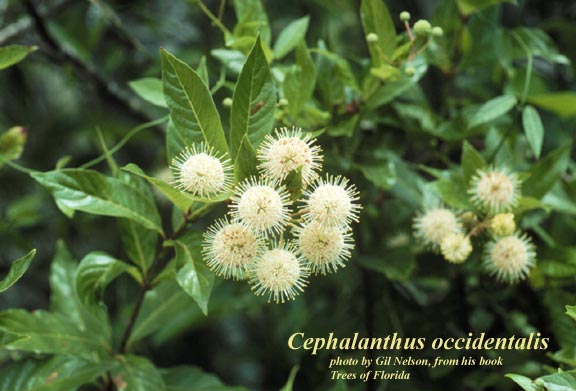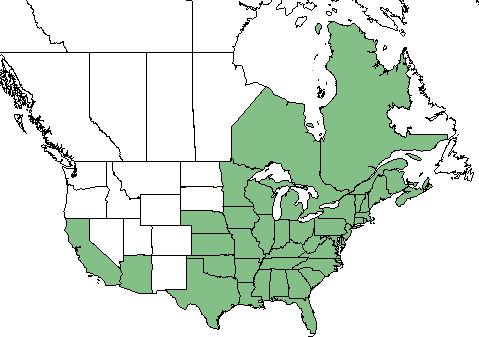Difference between revisions of "Cephalanthus occidentalis"
(→Ecology) |
(→Cultivation and restoration) |
||
| Line 46: | Line 46: | ||
==Cultivation and restoration== | ==Cultivation and restoration== | ||
| + | |||
==Photo Gallery== | ==Photo Gallery== | ||
<gallery widths=180px> | <gallery widths=180px> | ||
</gallery> | </gallery> | ||
==References and notes== | ==References and notes== | ||
Revision as of 18:08, 18 May 2018
| Cephalanthus occidentalis | |
|---|---|

| |
| Photo by the Atlas of Florida Plants Database | |
| Scientific classification | |
| Kingdom: | Plantae |
| Division: | Magnoliophyta - Flowering plants |
| Class: | Magnoliopsida - Dicots |
| Order: | Rubiales |
| Family: | Rubiaceae |
| Genus: | Cephalanthus |
| Species: | C. occidentalis |
| Binomial name | |
| Cephalanthus occidentalis L. | |

| |
| Natural range of Cephalanthus occidentalis from USDA NRCS Plants Database. | |
Contents
Taxonomic Notes
Synonyms: C. pubescens
Variety: none
Description
C. occidentalis is a perennial shrub/tree of the Rubiaceae family native to North America. [1]
Distribution
The C. occidentalis is found in the eastern United States, California and Arizona, as well as eastern Canada. [1]
Ecology
Habitat
C. occidentalis habitat is primarily wetlands. It can be found on streambanks, depressional wetlands, lakes, and in other standing water. [2]
This shrub requires full sunlight for flowering and can withstand habitats of up to three feet of standing water. [1]
Use by animals
The seeds of the C. occidentalis shrub is eaten by waterfowl.
Conservation and Management
Cultivation and restoration
Photo Gallery
References and notes
- ↑ 1.0 1.1 1.2 USDA Plant Database
- ↑ Weakley, A. S. (2015). Flora of the Southern and Mid-Atlantic States. Chapel Hill, NC, University of North Carolina Herbarium.